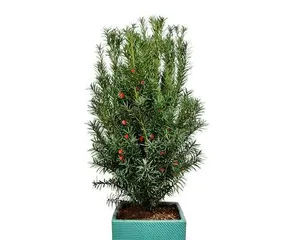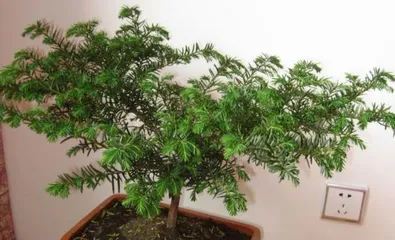In a fast-paced life, keeping a green plant can not only increase indoor oxygen levels but also soothe a tense mood. As one of the popular potted plants, the yew grows quickly and is suitable for indoor cultivation. This article will provide a detailed guide to indoor yew care, covering key care points, growth habits, and daily management.

Understanding the Yew
The yew is an evergreen tree, primarily found in subtropical regions. Its bark is grayish-brown, its crown is conical, and its leaves are linear, needle-shaped, or spiny. The flowering and fruiting season occurs in spring and summer. When grown indoors, the yew prefers a warm and humid environment.
Choosing the Right Lighting
When caring for a yew indoors, it should be placed in a location with ample light. During winter when indoor light is weaker, you can move the pot to a sunnier spot. In summer when sunlight is too intense, you can place the pot in a shaded area between 11 a.m. and 3 p.m.

Watering and Humidity
The yew's roots are sensitive and need to maintain moderate moisture. In a warm and humid environment, watering once or twice a week is sufficient. In dry seasons or when indoor air is dry, you can use a sprayer to mist the yew to maintain humidity.
Proper Fertilization
During the yew's growing season, you can fertilize it once every two weeks. However, be careful not to over-fertilize, as this can damage the plant. You can choose organic or compound fertilizers.
Pruning
The yew grows quickly and requires regular pruning. You can trim withered, damaged, or malformed branches to promote a beautiful and healthy tree shape. After pruning, fallen leaves and branches should be cleaned up promptly.

Hanging Cultivation
The yew can be cultivated by hanging. You can add a hanging ring to the pot and use a rope to hang it in a sunny, well-ventilated location. This method not only saves space but also allows the yew to develop a more elegant shape.
Providing a Suitable Temperature
The yew prefers a warm environment, with an ideal growing temperature of 18°C-25°C. In winter or at night, you can use a heater to provide a suitable temperature.
Preventing Pests and Diseases
The yew is susceptible to pests and diseases such as aphids and powdery mildew. You can spray the yew with soapy water or insecticide to treat it. At the same time, keep the pot clean to prevent the growth of pathogens.
Safety Precautions
The yew is a toxic plant, and its roots, stems, leaves, and other parts contain toxins. When caring for it, avoid touching, consuming, or coming into contact with its secretions. Also, place the pot where children cannot reach it.
Choosing the Right Pot
The yew's roots are sensitive and require a pot that is breathable and has good drainage. You can choose pots made of ceramic, plastic, or metal. Also, ensure the pot is large enough to meet the yew's growth needs.
Pay Attention to Drainage
The yew does not like waterlogged soil, so ensure the pot has good drainage. You can add drainage materials like bricks or sand to the bottom of the pot, and avoid letting the pot sit in water for extended periods.
Avoid Moving
The yew has a long growth period and can be easily damaged when moved or transported. During the care process, try to avoid moving the pot to ensure the healthy growth of the yew.
Pay Attention to the Dormancy Period
The yew enters a dormant period in autumn, during which its growth rate slows down. During dormancy, you should reduce the frequency of watering and fertilizing to promote healthy growth.
Changing Soil in a Timely Manner
The yew needs to have its soil changed regularly to maintain a suitable growing environment. You can change the soil in spring or autumn, but be careful not to damage the yew's roots.
Through this detailed guide to indoor yew care, we can understand the yew's growth characteristics and key daily management points. In the care process, pay attention to maintaining suitable temperature, light, and humidity, regular fertilizing and pruning, and preventing the invasion of pests and diseases. While enjoying the beauty and comfort that the yew brings, also be mindful of safety precautions and avoid contact with its toxic parts.